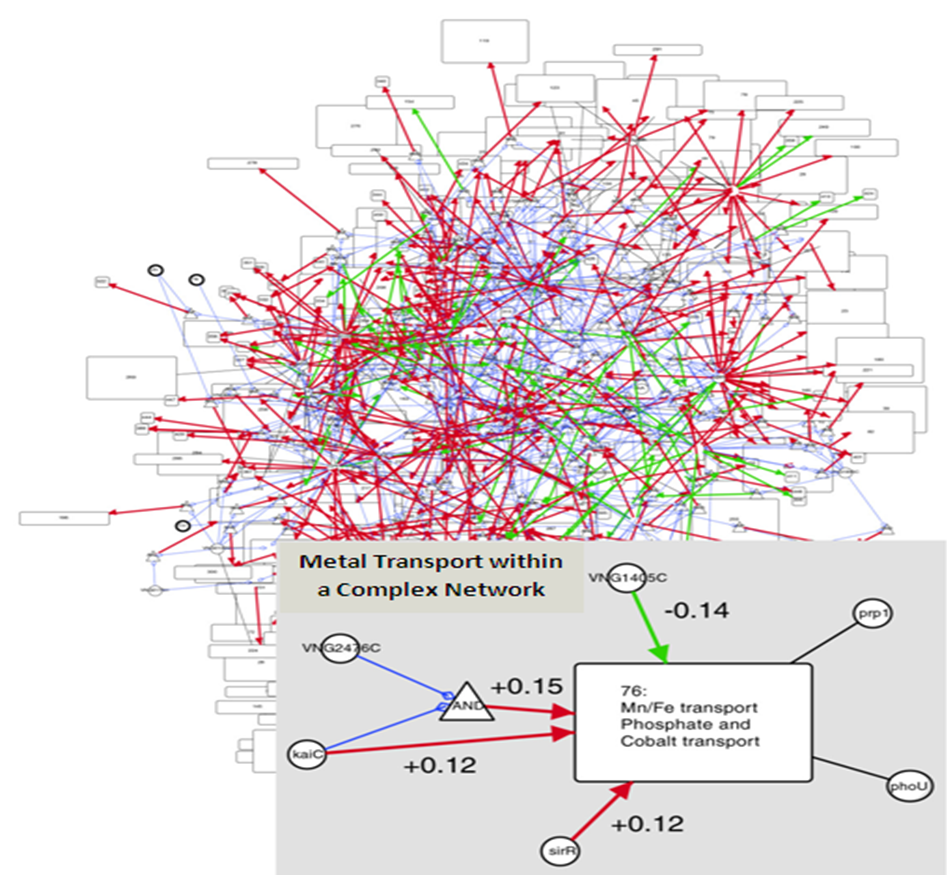Cell Phone Simulation
Blank Food Web
Purple Membrane Network Model
Computers and software have proved to be invaluable tools  when visualizing and analyzing complex networks. With many members (aka “nodes”) in a network, interacting through many different types of relationships (aka “edges”) the resultant data can be staggering. Through many collaborations, groups of individuals have worked to develop programs that allow us to make meaning of these relationships and to understand and predict the emergent properties that result when understanding complex networks. One such common and powerful software platform is Cytoscape. Cytoscape is an open source tool that allows scientists to visualize network interactions while integrating multiple data types. To bring this standard in current science to students, we have developed a cytoscape simulation that allows students to better understand the nature of network studies through a cell phone network example.
when visualizing and analyzing complex networks. With many members (aka “nodes”) in a network, interacting through many different types of relationships (aka “edges”) the resultant data can be staggering. Through many collaborations, groups of individuals have worked to develop programs that allow us to make meaning of these relationships and to understand and predict the emergent properties that result when understanding complex networks. One such common and powerful software platform is Cytoscape. Cytoscape is an open source tool that allows scientists to visualize network interactions while integrating multiple data types. To bring this standard in current science to students, we have developed a cytoscape simulation that allows students to better understand the nature of network studies through a cell phone network example.
Follow these links to learn more about the Cell Phone simulation, or to directly use the Cell Phone Simulation or to use our template to create your own simulation. See our Ecological Networks Module Description or our Ecological Networks Coursework to learn more about the student activities that surround this simulation.
Teachers also search for the best ways to visualize information in order to help students better understand all topics. NetLogo is a proven, user-designed tool that helps students visualize many complex topics. In order to aid students in understanding the network surrounding Halobacterium’senergy producing purple membrane pigment, bacteriorhodopsin, we have developed a NetLogo simulation depicting this dynamic molecular network. This Purple Membrane Network Model is explored in our Environmental Influence on Gene Networks Module.
NetLogo also provides a terrific platform for understanding Ocean Acidification. See our Ocean Acidification: A Systems Approach to a Global Problemmodule for a simulation for understanding what might happen to living organisms and ocean chemistry when the carbon cycle is disrupted.
All of the aforementioned software and education work stem from the interdisciplinary science taking place in our lab. We are utilizing systems approaches to investigate fundamental biological questions such as cellular responses to environmental and genetic perturbations. To support this effort we develop and utilize software tools and algorithms along the entire path of systems analysis, from data acquisition to synthesis of biological understanding. For a high school intern developed summary of these programs, please see this page. For a complete listing of these programs, please visit our Baliga Lab Resources Page.

